Wartime Heritage
ASSOCIATION


copyright © Wartime Heritage Association
Website hosting courtesy of Register.com - a web.com company
Yarmouth Drumhead Service
August 6, 1944
The Drumhead Service
For centuries, those about to go into battle asked for divine help and guidance in what were known to be difficult times ahead.
Because of the distances to be covered, and lacking any means of transport to take the soldiers to church, the Regimental
Padre conducted the service in the field. This called for a platform upon which he could place his bible and other pieces of
equipment he required to conduct a formal service. Lacking any other altar, the regimental drums were put into service by
stacking them in layers which then served as a temporary altar.
The first recorded use of the Drumhead for this purpose was documented in the 1700’s. It became a tradition. When Canada
formed her first regiment in the 1800's, the practice was continued and still remains a part of Canada's military tradition. It was used
not only for religious services it also became the table for court martial hearings in the field. Following the First World War, the
British Empire Service League adopted the Drumhead Service in order to foster and keep alive a centuries old tradition. The Royal
Canadian Legion continues this tradition today by conducting a Drumhead Service to pay homage to comrades who gave their lives in
defence of our country.
A Drumhead Service was held in Yarmouth on August 6, 1944. Soldiers at the Canadian Army Training Centre (Camp 60), the
airmen stationed at RCAF Station Yarmouth (West Camp) and the navy personnel of the Fleet Air Arm Royal Navy (Telegraphist Air
Gunner School) at RCAF Station Yarmouth (East Camp), marched from their various bases to the park located behind the Yarmouth
Cenotaph where the service was held.
On the bandstand, with the band behind, the drums were stacked and draped with the flag, from which the various military
chaplains and local clergy conducted the service.
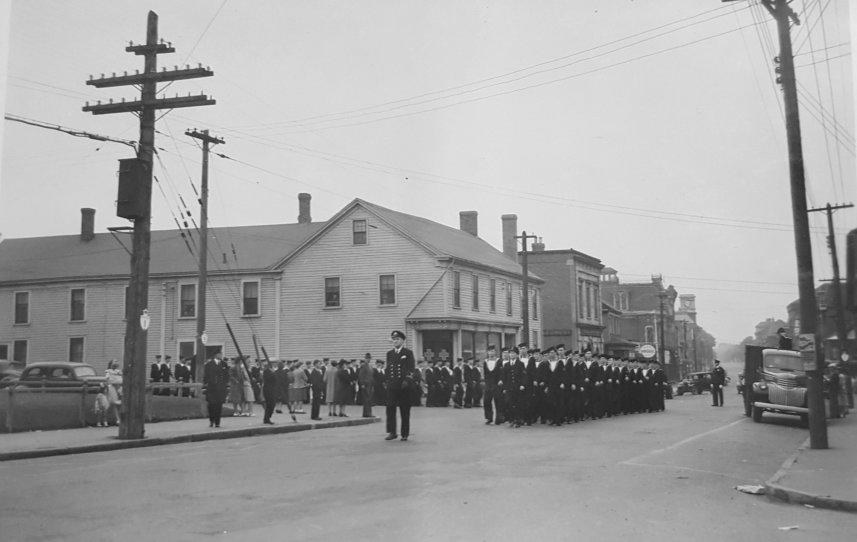
Personnel from East Camp marching down Parade St to Main St. The main floor of the building on the corner of Parade Street
and Main Street served as the Red Cross Headquarters in Yarmouth during WWII.
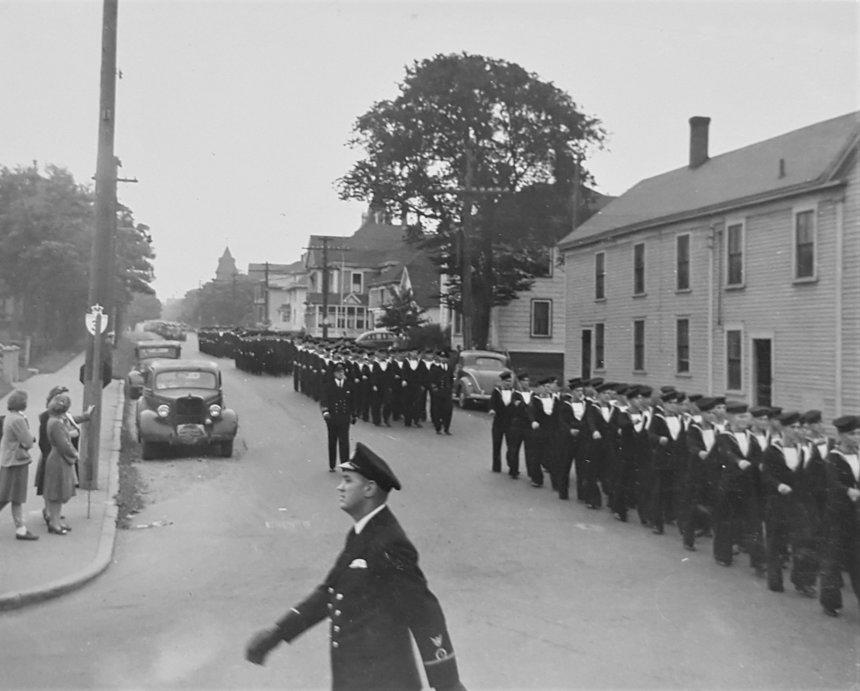
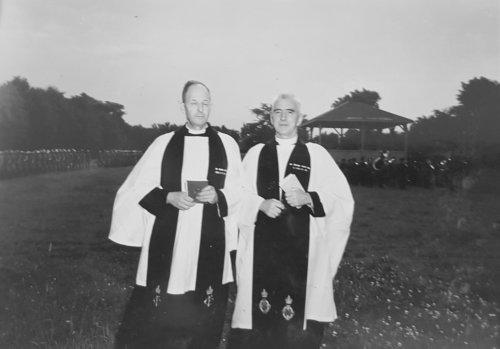
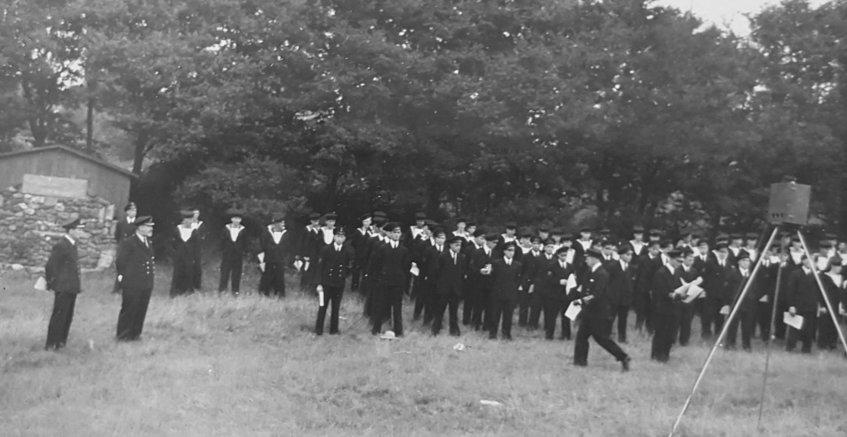
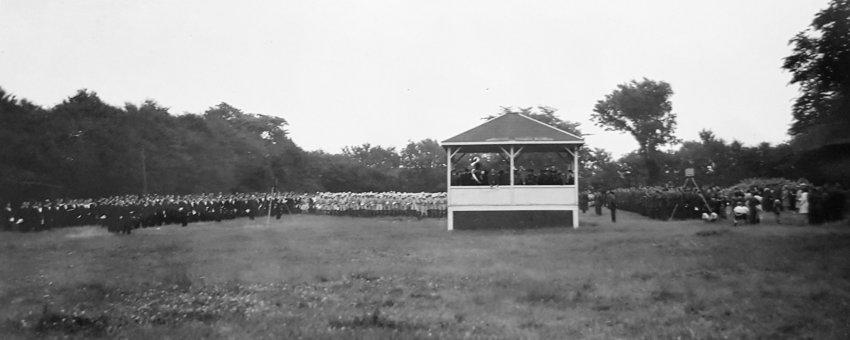
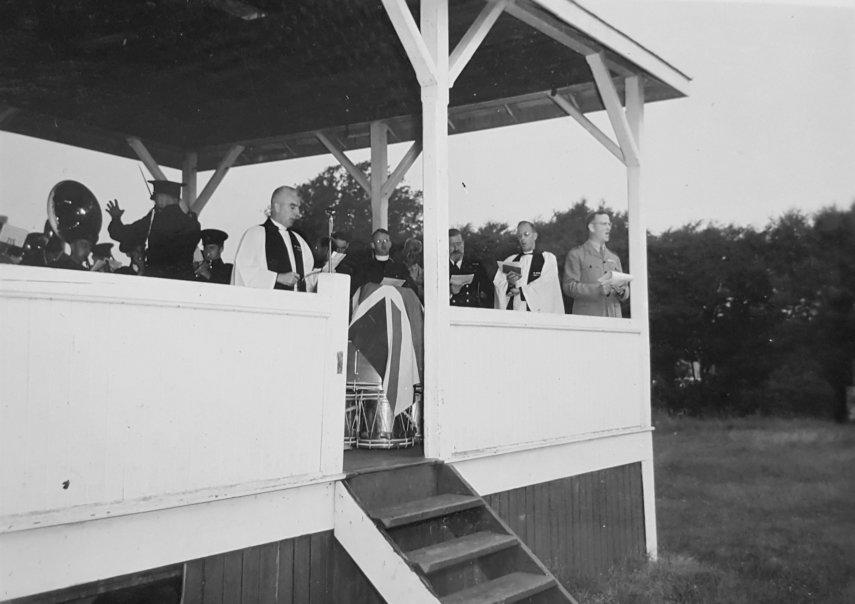
Organizing the Navy personnel prior to the service
The three military groups: Fleet Air Arm (left); Canadian Army (center); RCAF (right)
Service from the bandstand with flag draped drums.
Officiating Padres


- World War I - Menu
- WWI Stories and Articles
- Photos - Yarmouth Soldiers
- Selection of World War I Songs
- WWI Casualties of Yarmouth, NS
- Those Who Served - Yarmouth, NS
- WWI Casualties Digby Co. NS
- WWI Casualties Shelburne Co. NS
- Merchant Mariners (1915) Yarmouth, NS
- Canadian Forestry Corps - Non Yarmouth Birth/Residence Enlistments
- US Draft Registry - Yarmouth NS Born


- World War II - Menu
- WWII Stories and Articles
- Telegraphist Air Gunners
- WWII Casualties of Nova Scotia
- US Casualties with NS Connection
- Far East/Pacific Casualties with NS Connection
- Merchant Navy Casualties Nova Scotia
- Nova Scotia WWII Casualties Holten Canadian War Cemetery
- D-Day Casualties - Nova Scotia
- CANLOAN Program Casualties - Nova Scotia
- Battle of the Bulge Casualties - Nova Scotia
- WWII Casualties Yarmouth NS
- Yarmouth Casualties - RCAF RAF Canadian Army WWII
- Yarmouth Co., Marrages WWII
- Casualties Non-Born/Residents with Connection to Yarmouth Co., Nova Scotia.
- WWII Casualties Digby Co., NS
- Non-Nova Scotian WWII Casualties Buried in Nova Scotia
- WWII RCAF Casualties Aged 16-18
- Brothers/Sisters Who Served - World War II













